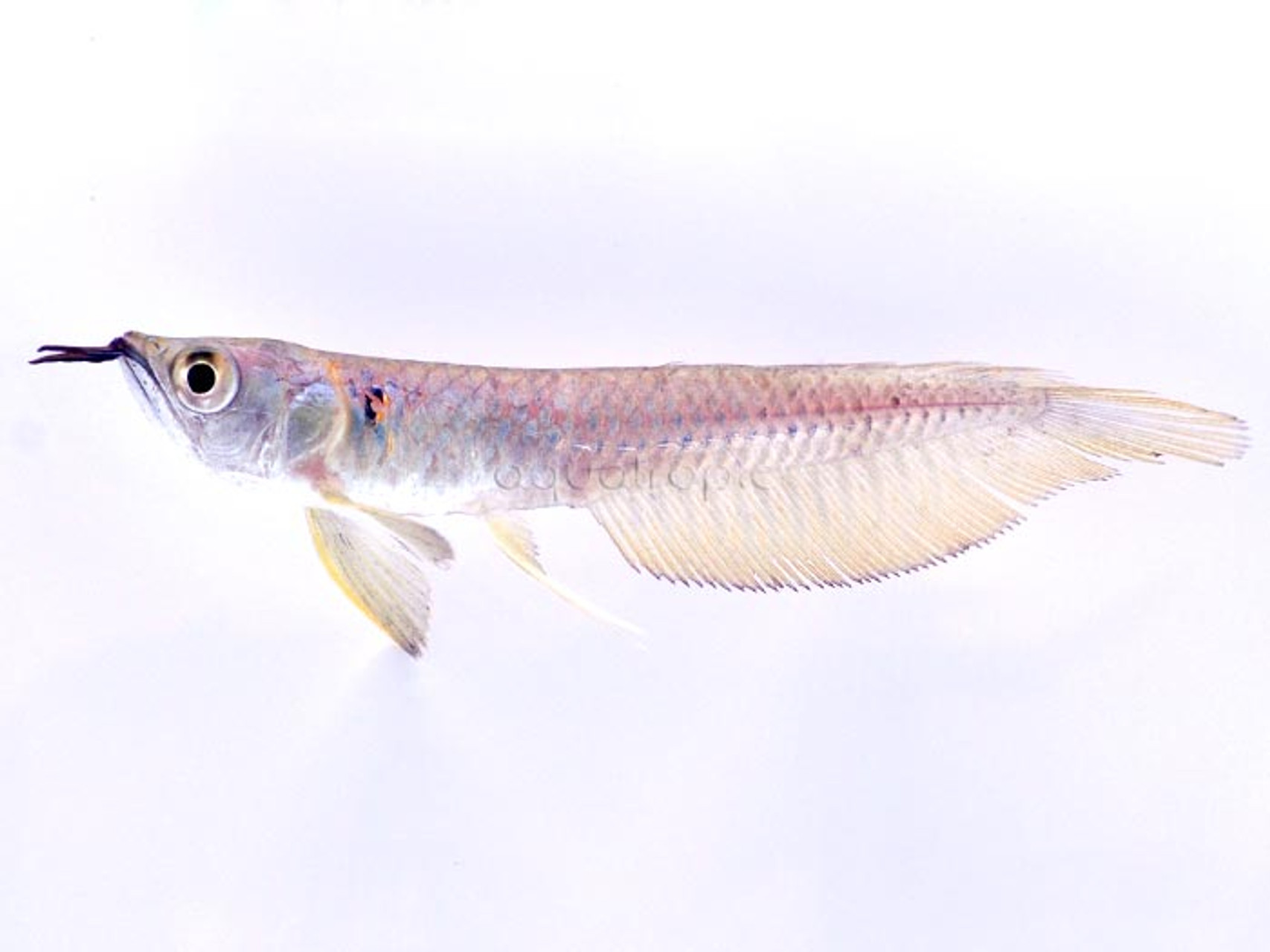Living Fossil: The Silver Arowana (Osteoglossum bicirrhosum)

Around 200 million years ago, back when the earth’s continents were still congealed together in a single landmass called Pangaea and dinosaurs were only first beginning to flex their muscle, a small group of fishes began to appear in the stagnant waters of this Mesozoic world. Today, these primitive piscines exist as just a handful of species scattered across Australia, Southeast Asia and South America, making these “living fossils” the only family of freshwater fishes with such a widespread distribution.
The most commonly seen species seen in aquariums is the Silver Arowana (Osteoglossum bicirrhosum), a handsome fish found throughout the Amazon River Basin. With its upward-facing mouth and long, sinuous body, this is a creature perfectly adapted for lunging at prey from the water surface and is even capable of jumping out of the water to reach the occasional dangling insect. For this reason, arowanas are notorious for jumping out of open aquariums and should always be provided with a secure and heavy lid; floating plants can also help to reduce this fish’s inclination to leap.
With a potential to reach nearly three feet in length, this is definitely a species suitable only for those interested in keeping a truly enormous aquarium (something in the 300500 gallon range). While this obviously excludes the vast majority of aquarists, the good news is that this is generally a peaceful fish that will mostly ignore its tankmates (provided they aren’t able to fit in the arowana’s capacious mouth). Suitable tankmates from the Amazon could include freshwater stingrays (Potamotrygon), larger catfishes (such as loricariids, doradids or pimelodids), peacock bass (Cichla) , wolffish (Hoplias) , and perhaps a school of dorado (Salminus) , pacu (Colossoma) or silver dollars (Myloplus) .
Arowanas are not terribly picky when it comes to feeding time and will voraciously snap at almost anything that touches the water surface, with some even learning to accept food directly from an aquarist’s hand. The small captive-bred juveniles that are most commonly available will thrive on a mix of pellets, bloodworms and shrimp, while larger individuals will require bigger food items. Multiple specimens can be kept together in groups, though this is only recommended for the largest aquaria (obviously), as, aside from their bulky dimensions, this species displays some amount of aggression amongst themselves. If cared for properly, arowanas are able to live for decades in captivity, so it is vital that aquarists considering this fish are able to commit to this fish’s considerable long-term care requirements. While undeniably charismatic, the small juveniles seen in the aquarium trade make for an especially poor impulse buy.